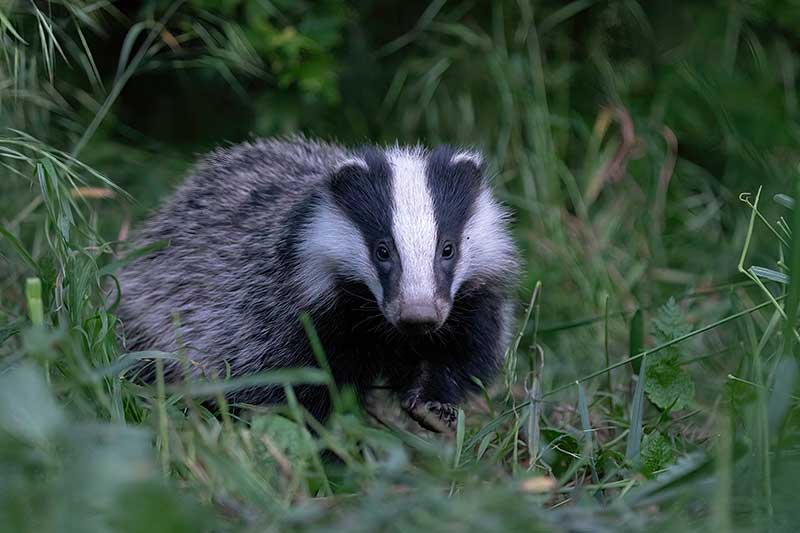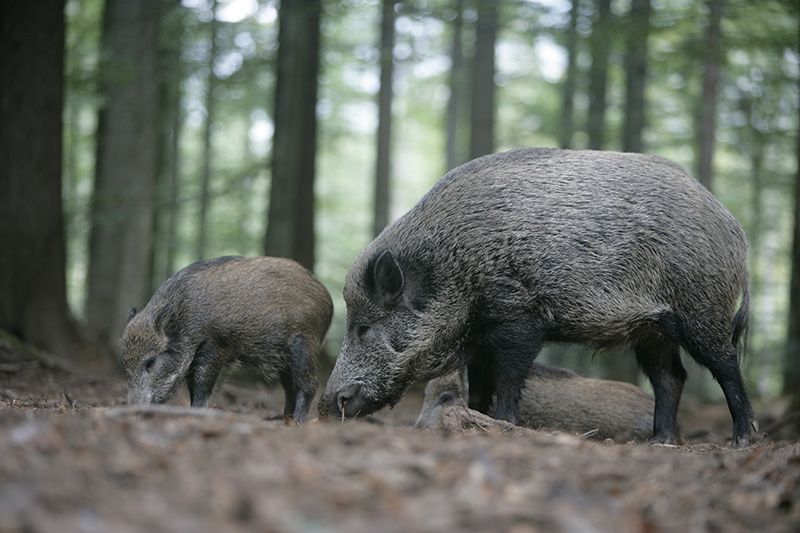Badgers and boars
Male badgers are known as boars, and female badgers, as sows and, while wild boar and badgers are very different beasts, it isn’t hard to see a resemblance…
Wild boar (Sus scrofa) belong to the group Artiodactyla (hoofed mammals with an even number of toes), along with deer. Badgers (Meles meles), on the other hand, belong to the Carnivora, some of whom go about eating artiodactyls. Even so, these two, at home in woodlands, aren’t a million miles apart in their habits.
Digging for delicacies
Wild boar and badgers have a keen sense of smell. They both use their sensitive, flexible snouts to dig and probe the forest floor. Badgers feed mostly on earthworms, but at this time of year they enjoy the autumn harvest and ‘root about like a pig for hidden delicacies,’ as Ernest Neal, a pioneer of badger studies, wrote. Like wild boar, badgers enjoy fruits, acorns and beech mast in autumn.
Wild boar – the ancestors of domestic pigs – are opportunistic feeders. They eat everything from fungi, tubers and seeds, to invertebrates, birds’ eggs and carrion, which are also on the menu of badgers.

Ecosystem engineers
Rooting through the leaf litter, turning over clods and breaking up the soil, plays an important role in forest ecosystems. It gives seeds of annual wildflowers, shrubs and trees space to germinate. The exposed earth provides warm basking spots and burrowing opportunities for insect species such as bees and beetles. Exposed seeds are also food for birds when pickings might otherwise be thin on the ground.
The earthworks of badgers and wallowing of wild boar, too, create microhabitats. These are heaps of soil brought to the surface or patches of bare earth, that are home to more plant and insect species than undisturbed areas. Trampling through vegetation encourages regeneration, and both badgers and boar are very good at distributing the seeds of fruits that they eat. In Britain, elder flowers seem to be a favourite of badgers. In Ireland, blackberry-feeding badgers are – as the authors of the study in Mammal Communications put it – effective dispersal agents for bramble.

Snuffling through leaf litter or digging up earthworms, wild boar and badgers shape their environment in similar ways. They’re both ecosystem engineers in woodlands, creating dynamic habitats and increasing biodiversity. Different beasts whose lifestyles have converged.
Get involved with our mammal watching surveys, Living with Mammals today or visit our mammal fact files to learn more about British mammals:
